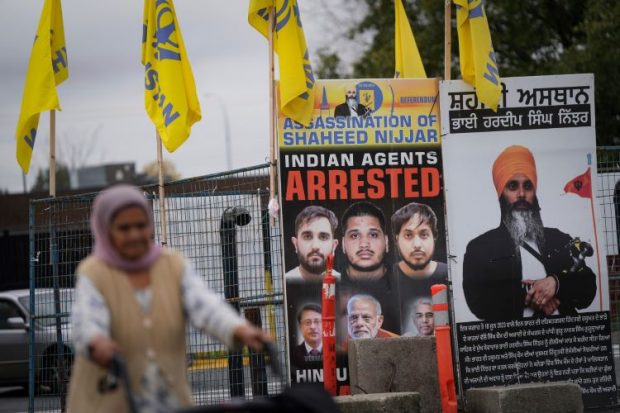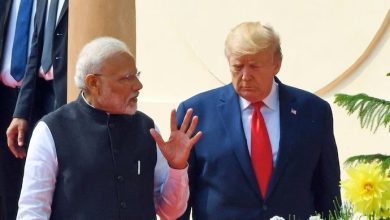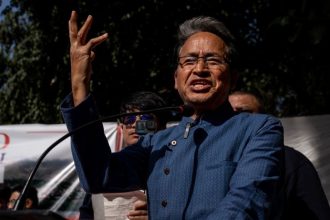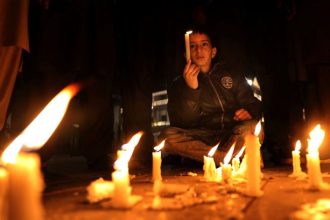
By Gunjeet Sra
NEW DELHI: In a bold statement last week, the Trudeau-led Canadian government accused India of assassinating and plotting the 2023 killing of Canadian-Khalistani advocate Hardeep Nijjar.
Nijjar, labeled a terrorist by India, was wanted in India for several cases like the 2007 bombing in Punjab that killed 6 people and injured 40 and the 2009 assassination of Indian Sikh politician Rulda Singh.
Nijjar, who moved to Canada in 1997, was also accused by the Indian government of masterminding the banned militant group, Khalsa Tiger Force, and of running camps in the north American country that trained people to carry out terror attacks in India.
In 2016, the India government reported its concerns on Nijjar to the authorities in Canada, the same year media published reports on Nijjar’s terrorist activities dating as far back as 2016.
However, the Canadian police chose not to act on the concerns and never charged him with anything. In 2016, Nijjar wrote a letter to PM Justin Trudeau addressing the claims against him and denying them all, stating that he was nonviolent, but believed in “the Sikh’s right to self-determination and independence of Indian occupied Punjab through a future referendum.”
In July 2022, India’s National Intelligence Agency announced a $1.2 million reward for any information on him.
Nijjar was born in India and later settled in the province of British Columbia, Canada, where he advocated for a separate state to be carved out for Sikhs–a religious minority group in India that comprises almost 2 percent of India’s population.
Interestingly, Canada hosts the largest diaspora of Sikhs in the world making up for almost 2 percent of their local population as well.
In response to Trudeau’s allegations, the Indian government issued a strongly-worded statement calling the allegations against Indian diplomats “preposterous imputations” and the “political agenda of the Trudeau government that is centered around vote bank politics.”
The Khalistani movement has its roots in the ethno-religious movement that calls for a separate state carved out of Punjab, India, for Sikhs; the proposed name for this state is Khalistan.
The idea for this autonomous state dates back to pre-partition India when the region of Punjab was being divided between India and Pakistan.
Punjab is the birthplace of Sikhism, the religious minority at the helm of demands for this state. It is to be noted that not all Sikhs want Khalstan. The demands for it peaked through the 1970s and the 1980s.
The movement gained such momentum at that time that it resulted in strong opposition from the Indian government in 1984, including bloodshed at the holiest shrine of the Sikhs— The Golden Temple.
Over 500 people died in the government operation and more than 1,100 were injured and displaced. Most of these deaths were civilian deaths.
The aftermath of the massacre resulted in the assassination of the then Indian Prime Minister, Indira Gandhi, followed by a nationwide violent pogrom against the Sikh community.
Therefore, the Sikh separatist movement resulted in great bloodshed and has left a traumatic mark on the affected civilians affected who want no part in the violent separatist agenda that the diaspora Khalistani activists advocate.
This is the same diaspora that fled abroad once the no-tolerance anti-militant laws were rolled into motion in India and advocated for the cause from abroad.
Canada, which houses one of the largest numbers of pro-Khalistan Indian diaspora, has often been accused by the Indian government of not doing enough to control the “anti-India” activities in Canada.
After the Canadian government made their accusations, India has repeatedly maintained that it has been presented with no evidence from Canada, except borrowed intelligence from the United States.
Based on this half-baked intelligence, Canada has gone as far as to charge the Indian High Commissioner, Sanjay Kumar Verma, as a person of interest in the plots of transatlantic killings and espionage, which directly resulted in the expulsion of diplomats and a complete breakdown of ties between the two countries.
Canada’s left-wing party, the National Democratic Party, led by Jagmeet Singh proposed to form an India-Canada committee to dig into the matter further; however, the proposal was turned down by the Canadian parliament.
At an event in India on October 21, External Affairs Minister S.Jaishankar called out Canadian hypocrisy stating that, “they (Canada) seem to have a problem if Indian diplomats are trying to make efforts to find out what is happening in Canada on matters which directly pertain to their welfare and security. But look what happens in India. Canadian diplomats have no problem going around collecting information on our military, police, profiling people, targeting people to be stopped in Canada. So apparently, the license that they give themselves is totally different from the kind of restrictions that they impose on diplomats in Canada.”
Interestingly, this is not the first charge against India. Around the same time that Canada made its accusations, the FBI issued a warrant against ex-Indian agent Vikash Yadav and listed him as “most wanted,” on its database for plotting the killing of another wanted terrorist by India, Gurpatwant Singh Pannun.
The charges against Yadav were part of a second indictment that was unsealed in a New York court. His alleged co-conspirator, Nikhil Gupta, was arrested in Prague under an extradition treaty between the US and the Czech Republic and extradited to the US on 14 June 2024.
This came on the heels of an Indian security delegation investigating the matter that traveled to the U.S and cooperated with the U.S. Department of Justice on the matter.
The Ministry of External Affairs has since confirmed that Yadav no longer works for the government, as the U.S indictment claims that he was directly employed by India’s Cabinet Secretariat.
Canada continues to maintain that the U.S indictment makes it clear that these planned killings were part of a single plot targeting Khalisatni leaders across North America.
However, there continue to be murmurs about there being more to the friction than meets the eye, including the BRICS summit in Kazan in Russia.
With the ever-expanding power of the BRICS, it has the power to change the face of international politics if decisions on new trade settlements are made, including an emphasis on “de dollarisation,” of the Indian economy.
India has taken a very different stance in the way it is handling the situation with the U.S. by choosing to cooperate with the investigation, while being in a standoff with Canada only because the Trudeau government has made it into a diplomatic row, without attempts at fact finding and directly making public allegations in the media.
Nevertheless, it puts India in a difficult position with the Five Eyes Bloc (the Anglosphere intelligence alliance comprising Australia, Canada, New Zealand, the United Kingdom, and the United State) as it navigates very public friction with its allies while holding its ground at the same time.




